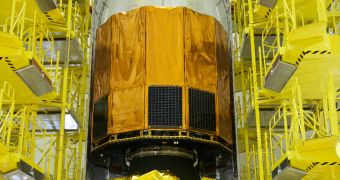Officials at the European Space Agency (ESA) announce that the Gaia space telescope is now just several days away from its scheduled launch date, on December 19. Once launched and commissioned, the spacecraft will investigate the positions of more than 1 billion stars, both in the Milky Way and beyond.
The purpose of Gaia is to create a 3D map of our galaxy and its immediate surroundings, by analyzing the positions of multiple stars in a series of all sky-surveys, to span a minimum of 5 years. The tiny differences in position that will be recorded during this time will be centralized to create the map.
Gaia is definitely one of the most complex space observatories constructed to date. It will conduct investigation via three instruments, called ASTRO (astrometric instrument), BP/RP (photometric instrument), and RVS (radial velocity spectrometer). The latter can be used for detecting exoplanets, too.
The spacecraft is scheduled to take off aboard a Russian-built Soyuz-FG medium-lift rocket from the Kourou Spaceport in French Guiana, South America. The delivery system will insert it in a Lissajous orbit in the L2 Lagrangian point, where it will always remain in the same relative position with regards to the Earth-Sun-Moon system.

 14 DAY TRIAL //
14 DAY TRIAL //